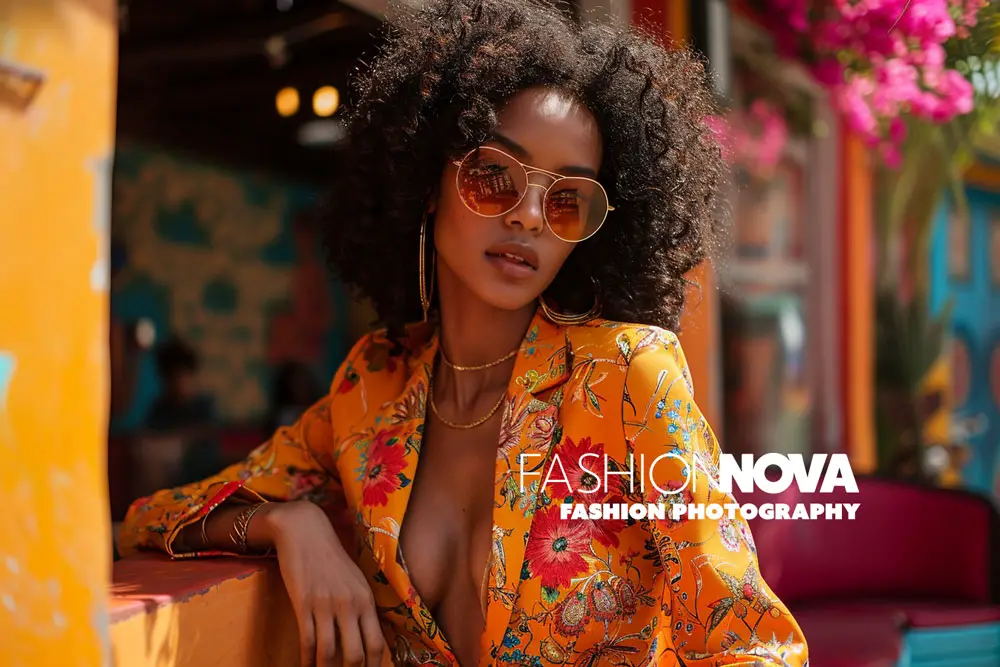
The Secrets of Visual Storytelling in Fashion Photography REVEALED
Imagine you are browsing through Instagram and you see a post from your favorite celebrity. She is wearing a stunning outfit that perfectly fits her curves and accentuates her features. You are instantly drawn to the colors, the patterns, and the style of the clothes. You wonder where she got them from and how much they cost. You tap on the post and see that she tagged Fashion Nova, a fast fashion brand that offers trendy and affordable clothing for women of all shapes and sizes. You are intrigued and curious to learn more about the brand and its products. You click on the link and enter a world of visual storytelling.
Fashion photography is an art form that uses images to create narratives that evoke emotions, spark imagination, and transport viewers into a world of beauty and inspiration. It can help shape the mood or tone of a piece and engage audiences in unexpected ways – providing depth to stories that only words alone could not articulate.
How Fashion Nova Rocks Visual Storytelling Photography
In this blog, I will explore how fashion photography can be used to market fashion products and services, as well as to communicate the brand’s identity and values. I will use Fashion Nova as an example of a successful fast fashion brand that uses visual storytelling effectively to stand out in the competitive and dynamic fashion industry. I will also compare and contrast Fashion Nova’s visual storytelling approach to that of some high-end fashion brands, such as Gucci, Chanel, or Dior.
As a fashion photographer who has worked with Fashion Nova and other brands, I will share my personal insights and experiences on how to create impactful images and stories that connect with the viewer on a deeper and more personal level.
Table of Contents
Visual Storytelling: The Key to Successful Fashion Marketing
Visual storytelling is the art of using images, videos, graphics, and other visual elements to convey a narrative or tell a story. It is a powerful tool for marketers to communicate their brand message and engage their target audience. Visual content is processed faster by the human brain than text, making it more effective at conveying information and emotions. It can also evoke a greater emotional response from the viewer, which can help to build brand affinity and drive sales.
Visual storytelling is especially important for fashion marketing, as fashion is an inherently visual industry. Fashion products are not just functional items, but also expressions of personal style, identity, and culture. By using visual storytelling, fashion brands can showcase their products in a compelling way, highlighting their unique features, benefits, and values. Visual storytelling can also help to create a strong brand identity, by conveying the brand’s personality, vision, and mission.
Moreover, visual storytelling can help to connect with the target audience on a personal level, by understanding their preferences, intentions, and feedback, and by creating images that resonate with them.
Some of the ways that visual storytelling can be applied to fashion marketing are:
Website design:
Using visuals to create an attractive and user-friendly website that showcases the brand’s products and services, and provides a seamless online shopping experience.
Social media campaigns:
Using visuals to create engaging and shareable content that promotes the brand’s products and services, and encourages interaction and feedback from the audience.
Lookbooks:
Using visuals to present the brand’s collections in a creative and appealing way, highlighting the inspiration, craftsmanship, and style of the products.
Editorials:
Using visuals to create a story around the brand’s products and services, using elements such as location, props, and models to create a mood and atmosphere.
Fashion films:
Using visuals to create a short film that showcases the brand’s products and services, using elements such as music, sound, and motion to create a dynamic and immersive experience.
Visual storytelling plays a crucial role in fashion marketing, as it helps to convey the brand’s image, showcase its products, and engage its target audience. Through captivating imagery, videos, and visuals, brands can transport their audience into a world that reflects their brand aesthetic and values. High-quality photographs, carefully curated Instagram feeds, and visually stunning campaigns all contribute to the storytelling experience.
The Secrets Behind Fashion Nova’s Visual Storytelling Success
Fashion Nova is one of the fastest growing fast fashion brands in the world, with over 19 million followers on Instagram and a loyal customer base of young, trendy, and diverse women. The brand is known for its ability to quickly replicate popular celebrity and runway styles and make them available to customers at a low cost. But how does Fashion Nova use visual storytelling to differentiate itself from other fast fashion brands and to appeal to its niche market?
Here are some of the key elements of Fashion Nova’s visual storytelling strategy:
Influencers and celebrities:
Fashion Nova leverages the power and popularity of influencers and celebrities to promote its products and to create a sense of community and loyalty among its customers. The brand collaborates with hundreds of influencers and celebrities, such as Cardi B, Kylie Jenner, and Megan Thee Stallion, who regularly post pictures and videos wearing Fashion Nova outfits on their social media platforms. These posts not only showcase the products, but also the personalities, lifestyles, and values of the influencers and celebrities, creating a narrative that resonates with the target audience.
Fashion Nova also encourages its customers to post their own pictures wearing the brand’s clothes, using hashtags such as #NovaBabe and #FashionNova, and rewards them with discounts and gift cards. This way, the brand creates a visual story that is authentic, relatable, and engaging for its customers.Variety and inclusivity:
Fashion Nova offers a wide range of sizes, colors, and patterns to suit different tastes and preferences of its customers. The brand also features models of different body shapes, sizes, and ethnicities, showcasing diversity and inclusivity in its visual storytelling. Fashion Nova aims to cater to the needs and desires of its customers, who are often underrepresented or ignored by other fast fashion brands.
By offering products that fit and flatter various body types, and by using models that reflect the diversity of its customers, Fashion Nova creates a visual story that is empowering, inspiring, and appealing for its customers.Graphics, animations, and overlays:
Fashion Nova uses playful and creative graphics, animations, and overlays to showcase its products and to create a fun and energetic mood in its visual storytelling. The brand uses colorful backgrounds, catchy slogans, and eye-catching effects to draw attention and interest to its products.
Fashion Nova also uses interactive features, such as quizzes, polls, and swipe-ups, to engage its customers and to encourage them to shop. By using graphics, animations, and overlays, Fashion Nova creates a visual story that is vibrant, dynamic, and entertaining for its customers.
The Contrast Between Fashion Nova and High-End Brands in Visual Storytelling
Fashion Nova and high-end fashion brands are both using visual storytelling to market their products and services, but they have different approaches and goals. In this section, we will compare and contrast Fashion Nova’s visual storytelling strategy to that of some high-end fashion brands, such as Gucci, Chanel, or Dior. We will focus on the following aspects:
The quality and craftsmanship of the products and the images:
High-end fashion brands are known for their exquisite quality and craftsmanship, both in their products and in their images. They use the finest materials, the most skilled artisans, and the most advanced technologies to create products that are durable, elegant, and luxurious. Their images reflect this quality and craftsmanship, as they are often shot by renowned photographers, edited by professional editors, and published in prestigious magazines or platforms.
Fashion Nova, on the other hand, is a fast fashion brand that prioritizes speed, affordability, and trendiness over quality and craftsmanship. Their products are made from cheap materials, mass-produced in factories, and often copied from other brands or celebrities . Their images are also less refined and polished, as they are often taken by influencers or customers themselves, using smartphones or digital cameras, and posted on social media or websites.The tone and style of the narratives and the emotions they evoke:
High-end fashion brands tend to use visual storytelling to create narratives that are sophisticated, artistic, and aspirational. They often use elements such as location, props, and models to create a mood and atmosphere that is consistent with their brand aesthetic and values . Their narratives evoke emotions such as admiration, awe, and desire, as they aim to inspire and impress their audience with their products and services.
Fashion Nova, on the other hand, tends to use visual storytelling to create narratives that are fun, playful, and relatable. They often use elements such as graphics, animations, and overlays to showcase their products and to create a fun and energetic mood. Their narratives evoke emotions such as excitement, joy, and confidence, as they aim to entertain and empower their audience with their products and services.The audience and the message they aim to communicate:
High-end fashion brands target an audience that is affluent, sophisticated, and discerning. They aim to communicate a message that is exclusive, prestigious, and influential. They want their audience to perceive their products and services as symbols of status, taste, and power.
Fashion Nova targets an audience that is young, trendy, and diverse. They aim to communicate a message that is inclusive, accessible, and empowering. They want their audience to perceive their products and services as expressions of style, identity, and culture.
Fashion Nova and high-end fashion brands have different visual storytelling strategies that reflect their different products, services, values, and goals. While high-end fashion brands use visual storytelling to create sophisticated, artistic, and aspirational narratives,
Fashion Nova uses visual storytelling to create fun, playful, and relatable narratives. Both strategies have their merits and challenges, and both can appeal to different segments of the fashion market.
Accessories: The Details that Make Your Fashion Story
Accessories are not just functional items, but also elements of style and personality. They can add detail and interest to your images, and enhance the style and mood of the model and the outfit. They can also help to tell a story, by suggesting a sense of history, mystery, or fun. In this section, we will explore how to use accessories to create a captivating fashion story.
Theme or Concept:
One of the ways to use accessories is to choose them according to the theme or concept of your fashion story. For example, if you are creating a story about a vintage lover, you can use accessories that reflect the era or style of your choice, such as a vintage watch, a pearl necklace, or a hat.
These accessories can help to create a sense of nostalgia, elegance, or charm. If you are creating a story about a traveler, you can use accessories that reflect the destination or culture of your choice, such as a scarf, a backpack, or a camera. These accessories can help to create a sense of adventure, curiosity, or discovery.Color or Pattern of your Outfit:
Another way to use accessories is to choose them according to the color or pattern of your outfit. For example, if you are wearing a monochrome outfit, you can use accessories that add a pop of color or contrast, such as a red belt, a yellow bag, or a blue necklace. These accessories can help to create a sense of excitement, energy, or boldness.
If you are wearing a colorful or patterned outfit, you can use accessories that complement or harmonize with your outfit, such as a matching bracelet, a similar ring, or a coordinated hat. These accessories can help to create a sense of balance, harmony, or sophistication.Emotion or Attitude:
A third way to use accessories is to choose them according to the emotion or attitude you want to communicate. For example, if you want to convey a sense of confidence, you can use accessories that are eye-catching, shiny, or glamorous, such as a pair of sunglasses, a statement necklace, or a sequin clutch.
These accessories can help to create a sense of self-assurance, charisma, or glamour. If you want to convey a sense of fun, you can use accessories that are playful, colorful, or quirky, such as a pair of earrings, a pom-pom keychain, or a novelty pin. These accessories can help to create a sense of humor, joy, or whimsy.
Accessories are powerful tools for visual storytelling in fashion photography, as they can add detail and interest to your images, and enhance the style and mood of the model and the outfit. They can also help to tell a story, by suggesting a sense of history, mystery, or fun.
By choosing accessories that match your theme, concept, color, pattern, emotion, or attitude, you can create a captivating fashion story that connects with your audience on a deeper and more personal level.
How Patterns and Textures Complement Your Fashion Story
Patterns and textures are visual elements that can create variety and depth in your images, and complement the style and mood of the model and the outfit. They can also help to tell a story, by suggesting a sense of movement, direction, or order, nature, beauty, or romance, or toughness, edginess, or rebellion. In this section, we will explore how to use patterns and textures to create a compelling fashion story.n
Type or Shape of Outfit:
One of the ways to use patterns and textures is to choose them according to the type or shape of your outfit. For example, if you are wearing a fitted or structured outfit, you can use patterns and textures that add some curves or softness, such as stripes, polka dots, or lace.
These patterns and textures can help to create a sense of femininity, delicacy, or grace. If you are wearing a loose or flowy outfit, you can use patterns and textures that add some edges or sharpness, such as geometric, floral, or leather. These patterns and textures can help to create a sense of masculinity, strength, or power.Season or Weather:
Another way to use patterns and textures is to choose them according to the season or weather of your fashion story. For example, if you are creating a story for spring or summer, you can use patterns and textures that are light, bright, or fresh, such as pastels, florals, or cotton. These patterns and textures can help to create a sense of nature, beauty, or romance.
If you are creating a story for autumn or winter, you can use patterns and textures that are dark, warm, or cozy, such as browns, plaids, or wool. These patterns and textures can help to create a sense of comfort, warmth, or nostalgia.Message or Emotion:
A third way to use patterns and textures is to choose them according to the message or emotion you want to communicate. For example, if you want to convey a sense of movement, direction, or order, you can use patterns and textures that are linear, symmetrical, or regular, such as stripes, checks, or herringbone. These patterns and textures can help to create a sense of dynamism, stability, or organization.
If you want to convey a sense of toughness, edginess, or rebellion, you can use patterns and textures that are rough, rugged, or irregular, such as leather, denim, or distressed. These patterns and textures can help to create a sense of attitude, character, or individuality.
Patterns and textures are powerful tools for visual storytelling in fashion photography, as they can create variety and depth in your images, and complement the style and mood of the model and the outfit. They can also help to tell a story, by suggesting a sense of movement, direction, or order, nature, beauty, or romance, or toughness, edginess, or rebellion.
By choosing patterns and textures that match your type, shape, season, weather, message, or emotion, you can create a compelling fashion story that captures your audience’s attention and emotion.
How to Adapt Your Visual Storytelling Skills to Different Markets and Purposes
Visual storytelling is not only a skill for fashion photographers, but also a valuable asset for any photographer who wants to create captivating images and stories. Whether you are working for a brand, a magazine, a website, or a personal project, you can apply the fundamentals of visual storytelling to different markets and purposes, and achieve different goals and effects. In this section, we will explore how to apply the fundamentals of visual storytelling to different markets and purposes.
Know Your Audience:
One of the fundamentals of visual storytelling is to know your audience and your message. Depending on the market and the purpose of your photography, you need to understand who you are targeting, what you are trying to communicate, and how you want them to feel. For example, if you are working for a brand, you need to know their identity, values, and goals, and how they want to position themselves in the market. You also need to know their target audience, their preferences, intentions, and feedback, and how they want to connect with them. Your message should be clear, consistent, and relevant, and your images should convey the brand’s image, showcase its products, and engage its target audience.
If you are working for a magazine, a website, or a personal project, you need to know the theme, concept, and style of your photography, and how they relate to the medium, the genre, and the audience. Your message should be creative, original, and interesting, and your images should convey the theme, concept, and style of your photography, and create a mood and atmosphere that suits the medium, the genre, and the audience.Know Your Audience:
One of the fundamentals of visual storytelling is to know your audience and your message. Depending on the market and the purpose of your photography, you need to understand who you are targeting, what you are trying to communicate, and how you want them to feel. For example, if you are working for a brand, you need to know their identity, values, and goals, and how they want to position themselves in the market. You also need to know their target audience, their preferences, intentions, and feedback, and how they want to connect with them.
Your message should be clear, consistent, and relevant, and your images should convey the brand’s image, showcase its products, and engage its target audience. If you are working for a magazine, a website, or a personal project, you need to know the theme, concept, and style of your photography, and how they relate to the medium, the genre, and the audience. Your message should be creative, original, and interesting, and your images should convey the theme, concept, and style of your photography, and create a mood and atmosphere that suits the medium, the genre, and the audience.Elements of Photography:
Another fundamental of visual storytelling is to use the elements of photography to create a narrative and a visual hierarchy. Depending on the market and the purpose of your photography, you need to use the elements of photography, such as composition, color, lighting, focus, angle, etc., to guide the viewer through the scene and create a visual hierarchy. You also need to use the elements of photography to create a narrative, by using elements such as characters, setting, plot, conflict, and resolution.
For example, if you are working for a brand, you need to use the elements of photography to highlight the product, the model, and the outfit, and to create a contrast, balance, or harmony between them. You also need to use the elements of photography to create a narrative that showcases the product, the model, and the outfit, and that communicates the brand’s message and values.
If you are working for a magazine, a website, or a personal project, you need to use the elements of photography to emphasize the subject, the theme, and the mood, and to create a variety, depth, or interest between them. You also need to use the elements of photography to create a narrative that showcases the subject, the theme, and the mood, and that expresses your creative vision and style.Elements of Fashion:
A third fundamental of visual storytelling is to use the elements of fashion to enhance your story and your style. Depending on the market and the purpose of your photography, you need to use the elements of fashion, such as clothing, accessories, patterns, textures, etc., to enhance your story and your style. You also need to use the elements of fashion to create a connection between the model and the viewer, and to evoke emotions and attitudes.
For example, if you are working for a brand, you need to use the elements of fashion that match the brand’s identity, products, and values, and that appeal to the target audience. You also need to use the elements of fashion that create a connection between the model and the viewer, and that evoke emotions and attitudes that align with the brand’s message and goals.
If you are working for a magazine, a website, or a personal project, you need to use the elements of fashion that match your theme, concept, and style, and that reflect your personal taste and preference. You also need to use the elements of fashion that create a connection between the model and the viewer, and that evoke emotions and attitudes that express your creative vision and personality.
Visual storytelling is a skill that can be applied to different markets and purposes, and that can achieve different goals and effects. By knowing your audience and your message, using the elements of photography to create a narrative and a visual hierarchy, and using the elements of fashion to enhance your story and your style, you can create captivating images and stories that connect with your audience on a deeper and more personal level.
Conclusion: Visual Storytelling in Fashion Photography
In this blog, we have explored how fashion photography can be used to create compelling narratives that showcase the brand’s identity, products, and values. We have used Fashion Nova as an example of a successful fast fashion brand that uses visual storytelling effectively to stand out in the competitive and dynamic fashion industry.
We have also compared and contrasted Fashion Nova’s visual storytelling approach to that of some high-end fashion brands, such as Gucci, Chanel, or Dior. We have also discussed how to use accessories, patterns, and textures to add detail and interest to your fashion story, and how to apply the fundamentals of visual storytelling to different markets and purposes.
Visual storytelling is an art form that uses images to create narratives that evoke emotions, spark imagination, and transport viewers into a world of beauty and inspiration.
It can help shape the mood or tone of a piece and engage audiences in unexpected ways – providing depth to stories that only words alone could not articulate. Visual storytelling is a powerful tool for fashion marketing, as it can convey the brand’s image, showcase its products, and engage its target audience. Visual storytelling is also a valuable skill for any photographer who wants to create captivating images and stories, whether for a brand, a magazine, a website, or a personal project.
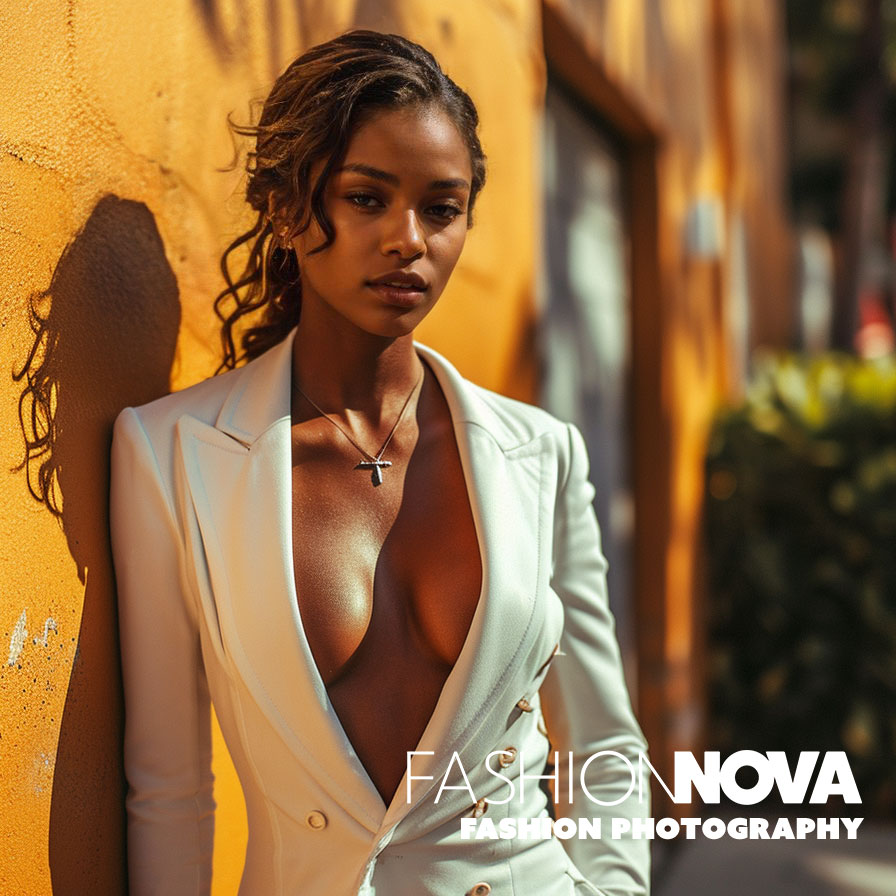
I hope you enjoyed reading this blog and learned something new about visual storytelling in fashion photography. If you have any questions, comments, or feedback, please feel free to share them in the comments section below. Thank you for reading and happy shooting!
In this blog, we have explored how fashion photography can be used to create compelling narratives that showcase the brand’s identity, products, and values.
We have used Fashion Nova as an example of a successful fast fashion brand that uses visual storytelling effectively to stand out in the competitive and dynamic fashion industry. We have also compared and contrasted Fashion Nova’s visual storytelling approach to that of some high-end fashion brands, such as Gucci, Chanel, or Dior. We have also discussed how to use accessories, patterns, and textures to add detail and interest to your fashion story, and how to apply the fundamentals of visual storytelling to different markets and purposes.
Visual storytelling is an art form that uses images to create narratives that evoke emotions, spark imagination, and transport viewers into a world of beauty and inspiration. It can help shape the mood or tone of a piece and engage audiences in unexpected ways – providing depth to stories that only words alone could not articulate. Visual storytelling is a powerful tool for fashion marketing, as it can convey the brand’s image, showcase its products, and engage its target audience. Visual storytelling is also a valuable skill for any photographer who wants to create captivating images and stories, whether for a brand, a magazine, a website, or a personal project.
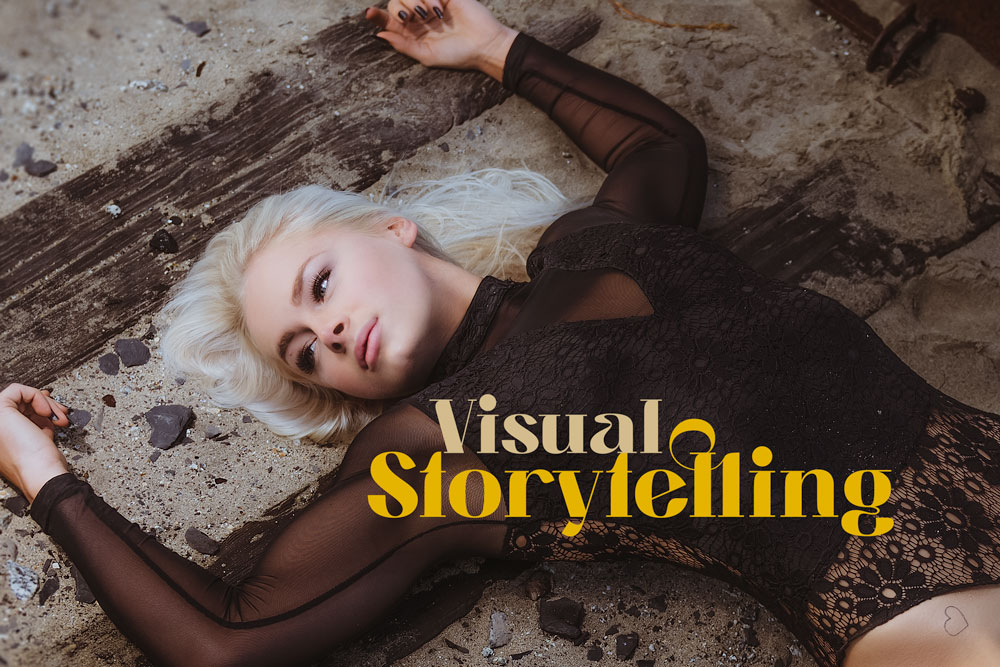
Visual Storytelling Techniques: A Guide to Creating Powerful Stories with Images and Words What You Will Learn Overview: Table of Content How to Craft Compelling Stories with Visual Elements What is Visual Storytelling and Why is it Important? Visual storytelling is the art of using images and words to create a powerful story that connects…


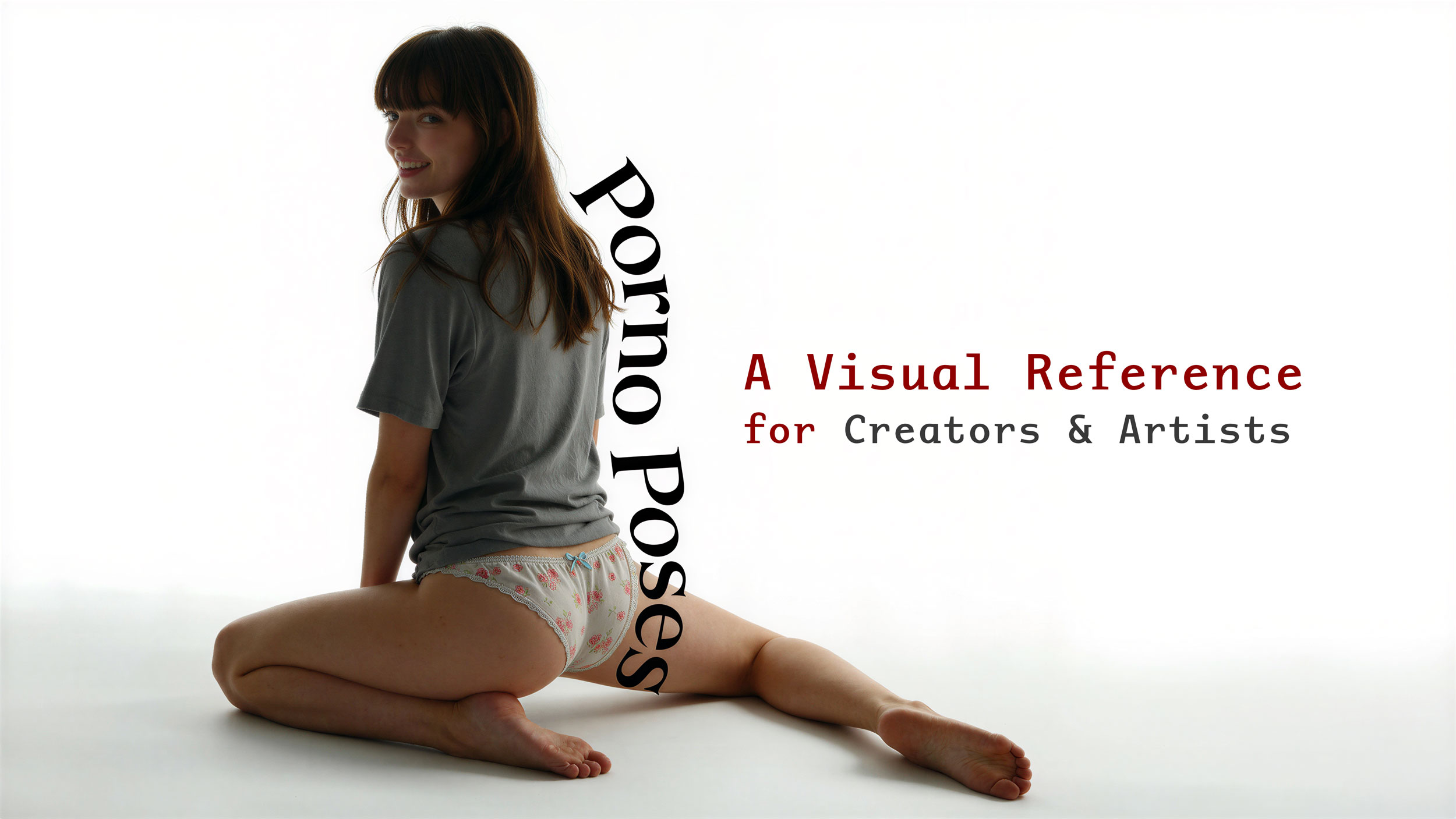
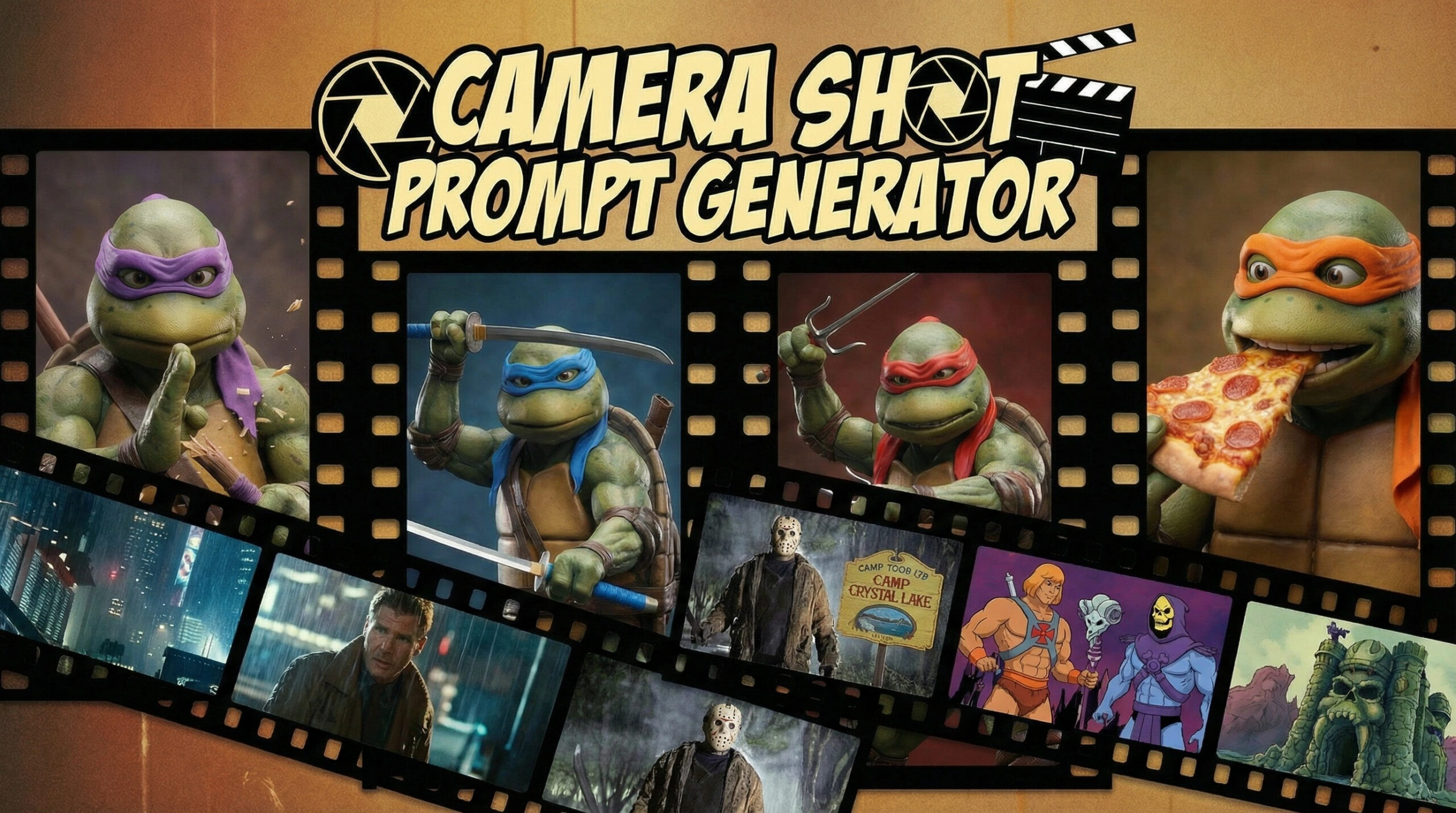


Leave a Reply